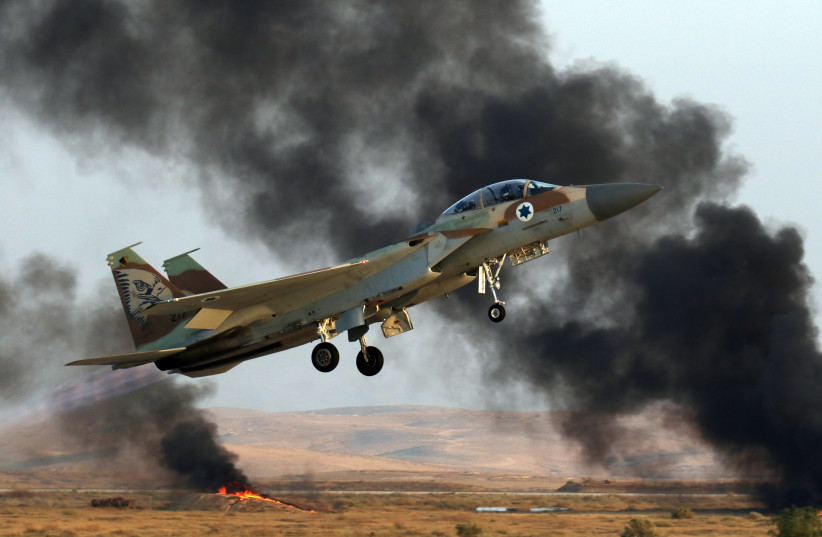How bad will it be for Israel’s national security if the trend of IDF reservists striking against the government’s judicial overhaul policy leads to key units being less ready for war?
Questions about the IDF’s reserves are invariably highly complex.
On the one hand, in recent years there were said to be well over 400,000 IDF reservists who could be called up in the event of a war – a number many times larger than the IDF’s standing army.
This sounds like a lot.
On the other hand, the INSS think tank and other surveys have indicated that only 1.5% of residents serve in the reserves, and only about 6% of soldiers who complete their mandatory service continue to be on active reserve duty.
This suggests the number of reservists who regularly show up for training even in normal times is much smaller than the over 400,000 claimed.
How to judge the significance of the IDF reserves
One way to judge the significance of the reserves more concretely is to look at ways they have been used in recent conflicts.
At a recent Jerusalem Institute for Strategy and Security conference, former IDF chief Gadi Eisenkot said that although many think of the reserves as not likely to be used in actual combat, large numbers were used in crucial capacities not only in the 1973 Yom Kippur and 1982 First Lebanon wars, but also more recently in 2002 Defensive Shield and in 2014 Protective Edge.
In the 2014 Gaza war, at some point, over 80,000 IDF reservists were called up, fulfilling a wide variety of critical roles, in by far the largest most recent call up.
Then there are smaller call-ups or demonstrations of capacity that sometimes help shorter conflicts.
In April 2022, the IDF called up sizable numbers of reservists to confront the terror wave in the West Bank so as to blanket more areas with more soldiers and restore security.
Although not a full scale war, it is unclear whether the IDF could have quickly deployed sufficient forces in the West Bank to deter the escalating terror trend without being able to use reservists.
In August 2022, the former government approved calling up 25,000 reservists during the multi-day conflict with Islamic Jihad in Gaza.
Ultimately, the full reservist call-up did not need to be implemented since the conflict ended within days, but might the conflict itself have lasted longer if Islamic Jihad had not known that Jerusalem could quickly bring another 25,000 troops to the front for a more intense fight?
Eisenkot also said at the JISS conference that the reserves today are vital so that the IDF can be prepared for a “multi-front continuous conflict, with cyber attacks – this is the scenario we need to prepare for.”
None of this means that every reservist is equally important any more than every regular IDF soldier who has real war-making value.
This has meant that some reserve units in recent years have gotten more attention and resources, and others much less.
Eisenkot said at the conference that he “understands the concerns of people who saw severe problems” with the reserves in the past, but that at the same time, the IDF has limited resources and many threats, and must “manage its various risks” – which sometimes means investing in new technologies or special forces at the expense of portions of the reserves.
In a rhetorical flourish, he asked, “can we keep everyone [all the reserves] at a high level of readiness? No.”
Why some IDF reservists striking could be so devastating
And this is part of why the two latest public letters of reservists – from IDF Unit 8200 intelligence and air force combat pilot reservists – could be so potentially devastating.
Other than reservists in some Special Forces’ infantry units, these two groups are among the most crucial reservists groups for the IDF to function and be able to attack Iran or any other adversaries if necessary.
When Yair Netanyahu, who has not served in the IDF reserves and did his service as a noncombatant in the IDF Spokesperson's Office, calls for putting these people in prison as “refuseniks,” he is showing a massive misunderstanding not only of the law, but of the needs of the country.
“Refuseniks” normally refers to citizens who are called up for their initial obligatory service and refuse to show.
Some have talked about “refuseniks” in the context of IDF soldiers following or refusing orders during their mandatory service years that involve controversial moves, such as home demolitions, against Palestinian or Jewish settler civilians.
In fact, all recent surveys show that IDF reservists are going against the trend and do not even get sufficient respect from Israeli society or sufficient pay from the military.
When you add in the military element for elite units like Unit 8200 and the combat pilot Unit 69, what Yair Netanyahu may not realize is that they are not even replaceable. Try to rebuke them and there will just be no one in the cockpit to fly certain critical aircraft or using cyber capabilities to collect certain important intelligence.
The reservist striking trend should come as no surprise since surveys show that an inordinate number of reservists and in critical elite units come from the Tel Aviv corridor, where the protests are at their strongest.
At some point, this striking trend could lead to an avalanche of the 1.5% of people just deciding to drop out of the IDF entirely.
Putting this whole picture together, while the impact of the current and potentially larger numbers of striking reservists may not be exactly quantifiable, there is no question that at least some of the nightmare scenarios could be catastrophic for the IDF.

